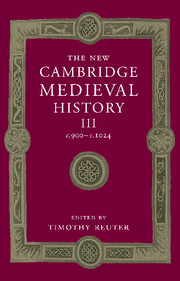
- Cited by 4
-
Cited byCrossref Citations
This Book has been cited by the following publications. This list is generated based on data provided by Crossref.
Melve, Leidulf 2003. Literacy --Aurality --Orality A Survey of Recent Research into the Orality/Literacy Complex of the Latin Middle Ages (600-1500). Symbolae Osloenses, Vol. 78, Issue. 1, p. 143.
2014. The Apocalypse in the Early Middle Ages. p. 189.
Sutt, Cameron 2014. The Early Árpáds (895–1095): Consolidation, Christianization, Monarchy. History Compass, Vol. 12, Issue. 2, p. 150.
Roberts, Edward 2019. Flodoard of Rheims and the Writing of History in the Tenth Century.
- Publisher:
- Cambridge University Press
- Online publication date:
- March 2008
- Print publication year:
- 2000
- Online ISBN:
- 9781139055727




